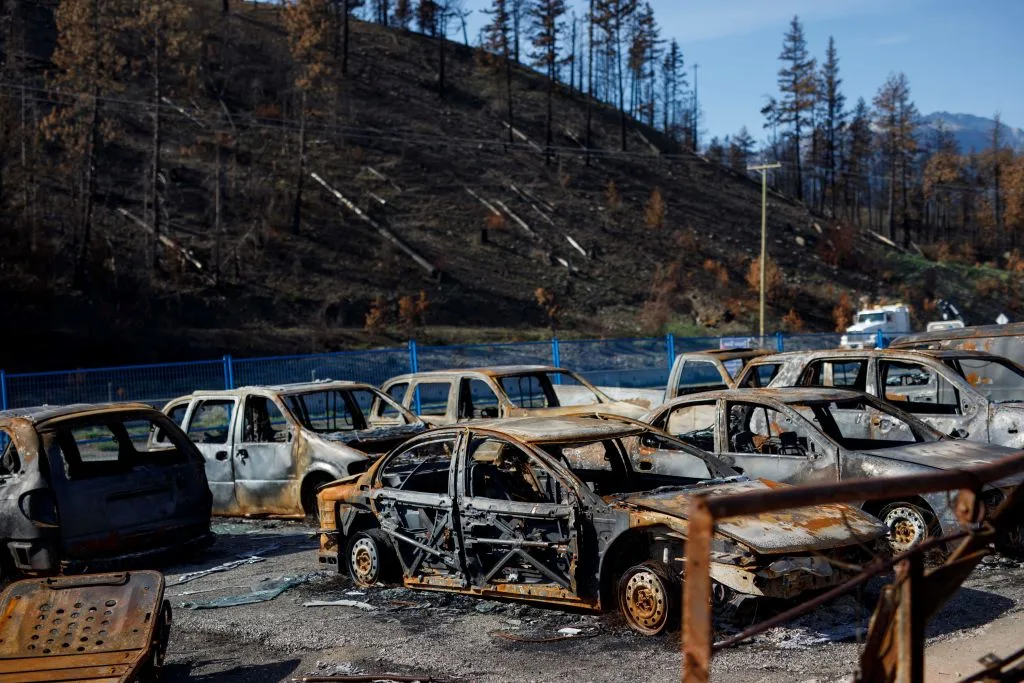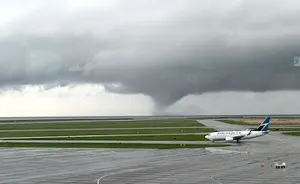
Millions will endure a "climate penalty" as global air quality drops, WMO says
Parts of Canada saw dangerous air quality levels in 2021 due to severe wildfires burning across the country.
The World Meteorological Organization (WMO) warns that hundreds of millions of people will face a “climate penalty” due to the compounding effects of poor air quality caused by pollution and from impacts of increasing wildfires and heat waves that are becoming longer, more intense, and more frequent.
Each year the WMO releases an Air Quality and Climate Bulletin report that assesses the changing climate and how air quality is being influenced. The 2022 bulletin is focused on the impact of wildfire smoke in 2021, which originated from extreme wildfires in Siberia and North America and resulted in high levels of particulate matter being scattered across the world.
Particulate matter smaller than 2.5 micrometres (PM2.5) is a component of wildfire smoke that is hazardous to human health because it can travel deep into the lungs and cause inflammation and respiratory issues. The bulletin states that abnormally high PM2.5 concentrations were found in Siberia and Canada during July and August of last year due to wildfires in the respective regions.

Seasonal (May to September mean) fire PM2.5 contribution to total forecasted surface PM2.5 concentrations (µg/m³) for 2021 over North America. (Environment and Climate Change Canada)
The level of emissions from the intense 2021 fire season in Western North America ranked in the top five years from 2003 to 2021. The World Health Organization (WHO) recommends an annual PM2.5 concentrations exposure limit of 5 µg/m³, but several provinces in Canada, including Manitoba and Ontario, saw concentrations of at least 50 µg/m³. The WMO stated that PM2.5 emissions in North America were largely driven by wildfires.
Siberia recorded the highest concentration of PM2.5 that the Arctic country has ever seen due to increasingly high temperatures and dry soil conditions. India and parts of Southern Asia also saw unusually high PM2.5 concentrations due to heat and local agricultural waste burning practices.

Devastation from wildfires in Lytton, British Columbia, on September 1, 2021. (Cole Burston/AFP via Getty Images)
The annual amount of total burned area around the world had a downward trend over the last 20 years, which the WMO said is due to a decreasing amount of fires in savannas and grasslands. However, certain regions including Canada, the U.S. the Amazon, and Australia saw increasing trends.
Ozone, often referred to as smog, is an air pollutant produced by human activity and differs from the ozone that is naturally produced in the upper atmosphere. Heat waves cause other pollutants, such as nitrogen oxides and volatile organic compounds to form ozone, which can significantly lower air quality and irritate the respiratory system.
Watch below: Does breathing in wildfire smoke mean lung issues for life?
Air quality typically worsens during heat waves due to low wind speeds and stagnant atmospheric conditions that allow pollutants to accumulate. The WMO stated that the expected increase in length and frequency of heat waves could result in prolonged episodes of poor air quality, particularly for regions that are located in or downwind of pollutant emissions.
“This could lead to increases in episodes of poor air quality over highly polluted areas, and a degradation of air quality in those areas where emissions are not necessarily high, a phenomenon known as the climate penalty,” the WMO stated in reference to the production of ozone at the Earth’s surface.
Under a low-emission scenario, catastrophic wildfires of comparable intensity to those seen in Australia (2019) and North America (2021) are 30-50 per cent likely to increase by 2100. This likelihood increases by 40-60 per cent in a business-as-usual emissions scenario.
Thumbnail image: Photograph of a bushfire taken from Echo Point lookout, Katoomba, Australia. (Andrew Merry/ Moment/ Getty Images)











